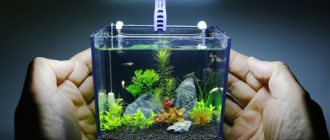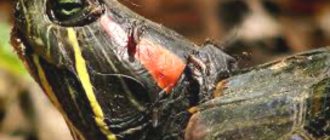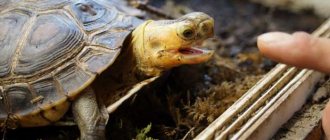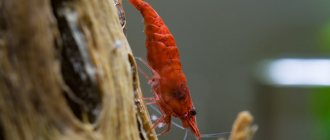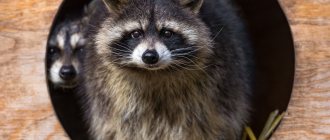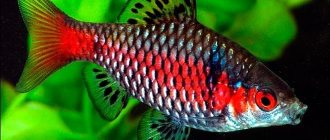Turtles are considered the oldest freshwater animals on earth, appearing on Earth much earlier than humans. Under natural conditions, they can live in almost any zone - in the tropics with high humidity or, conversely, in very dry regions, for example, in the steppes, as well as in areas with temperate climatic conditions. Amphibians can live both on land and in water.
Due to the fact that reptiles have an unpretentious nature, many people breed them at home. But before purchasing them, it is worth considering what types of these amphibians exist. They are usually divided into two groups: freshwater and land. While freshwater turtles are familiar to many, not everyone knows the types of land turtles. But this species includes many subspecies that have interesting features.
Types of land turtles
The most common in Russia is Central Asian. There are 37 varieties in nature. Distributed in Africa.
Central Asian
In nature they hibernate. Small in size - up to 20 cm. The carapace is rounded, yellow-brown. Diet: 90% plant based.
Mediterranean
The young of this breed do not survive well when kept at home. Choose an adult. It feeds on earthworms, snails, and plant food. Grows up to 28 cm. The carapace scutes form rings with a dark outer edge.
Coal (red-legged)
Requires high humidity and temperatures from 27 degrees. Grows in captivity up to 55 cm. Food: fruits, vegetables, meat.
Leopard print
A body of water is required. A large turtle grows up to 60 cm. The color of the shell is light brown with dark spots. The diet consists of only grass. Juicy vegetables and fruits are dangerous to health.
Radiant
Size up to 40 cm. Very beautiful domed shell. The dark scutes have yellow spots in the shape of stars. The diet contains green parts of plants.
Other types
gear
red-headed flat
star-shaped
ivory
musky
Balkan
Egyptian
Purchase and selection
The best-selling breed is the Central Asian. Small in size, does not require special care. Larger turtles are not as easy to keep. They will need a separate large area.
Tips for choosing an animal:
- The phase of greatest activity occurs in the morning and evening. Turtles are also most active in the warm summer months. At this time, it is clear that a healthy pet is offered for sale or a sick one. Note:
- behavior, coordination and activity;
- no damage;
- color without strange spots;
- shell scutes tightly adjacent to each other;
- body shape;
- plaque in the mouth, it should not be there, just like viscous saliva;
- dry nose (discharge indicates illness).
- Try to find professional breeders.
- Choose a juvenile or adult turtle. The baby will require additional care and is susceptible to diseases.
In summer, you can transport the turtle in a cardboard box filled with paper. In winter, place a heating pad in the carrier.
Leopard tortoise (panther tortoise)
This species of turtle lives mainly in Africa. Individuals are relatively large in size. The length of the shell can reach up to 70 centimeters, and body weight up to 50 kilograms.
The shape of the shell is round, this part is very high and rises strongly above the body of the reptile. The color of the shell is sandy with a yellow tint. Juveniles may show a spotted pattern with black or dark brown coloring. This pattern gradually disappears as the individual grows older.
How to keep a land turtle
The most common mistake that turtle owners make is keeping it on the floor. Possible consequences:
- colds from drafts and cold coverings;
- may crawl into a corner and not get out or get stuck under furniture;
- dust getting into the nose will damage the lungs and respiratory tract;
- receiving a variety of injuries if, for example, the owner steps on it carelessly.
A specially equipped place of residence is required - a terrarium.
Terrarium
Caring for a land turtle at home begins with arranging the home. A cardboard box is also suitable as a temporary option, but you need to set up a terrarium for your pet:
- Sizes from 100 cm in length, 50 in width and 30 in height will allow the animal to move freely and eliminate the possibility of escape.
- When arranging, leave plenty of free space. Avoid creating unnecessary barriers.
- Install the future home in a warm place at a height of 20 cm from the floor to protect it from drafts.
- Leave room for a mini pool or large drinking bowl. The turtle is able to absorb water from the outside. Liquid improves bowel function.
The larger the pet, the larger the size of the terrarium required.
If you choose a former aquarium for your home, wash it thoroughly with disinfectant solutions.
Priming
Start arranging the terrarium by covering the bottom. Aquarists prefer several options:
- A mixture of earth and coconut fibers. If the soil is not purchased, first heat it to get rid of parasites.
- Sawdust. This filler is sold in pet stores.
- Coarse gravel.
- Special substrates. Formulations for reptiles are allowed.
The thickness of the layer is from 3 to 15 cm. It changes as it gets dirty.
And also put large flat stones in the terrarium. The turtle will bask on them and grind off its claws.
Do not use sand and small stones as soil; turtles swallow them and get a blockage in their intestines.
Water
Install a special drinking bowl with fresh, warm drinking water in the terrarium. To maintain the temperature of the liquid, place it under a lamp.
For the drinking bowl, take a large, heavy and almost flat container. Low sides will allow easy access to the water, and the weight will prevent it from tipping over. Keep the water level no higher than the middle of your pet's shell.
Galapagos tortoise (elephant)
This is the largest land turtle that lives in the Galapagos Islands. The main feature of these reptiles is that they are large in size and live only in natural conditions.
It is worth paying attention to its main qualities:
- they have a very long shell, its length can be almost 1.9 meters;
- these turtles are heavy, their body mass can reach up to 400 kilograms;
- in arid regions, small reptiles weighing no more than 100 kilograms are mainly found. They have a saddle-shaped carapace and long, thin legs;
- individuals living in regions with high humidity have a round-shaped shell. Their body size is quite large; this is where you can find huge turtles with a body weight of 300-400 kilograms.
How to care for land turtles at home
Care is simple, follow a few rules and the animal will be active and healthy:
- Keep your terrarium clean.
- Diversify your diet.
- Bathe your pet every week.
- Watch the claws and beak.
- Take walks.
Feeding
The basis of the diet of a land turtle is plant foods:
- 75–80% greens;
- 20–25% fruits and vegetables.
A serving is half the turtle's body volume.
In warm weather, be sure to provide outdoor plants and wash them thoroughly so as not to infect the turtle with worms. Especially useful for the animal:
- Dandelion. All parts of this plant contain vitamin A, which is essential for your pet.
- Plantain leaves. The high fiber content helps improve bowel function.
- Salad. Your favorite delicacy can also be grown in pots in winter.
And also suitable: clover, leaves of coltsfoot, sorrel, petunia, honey, thistle and rhubarb leaves.
Among vegetables, turtles eat carrots, cucumbers, zucchini, bell peppers, and pumpkin. It is better to grate hard vegetables, give soft ones in pieces.
Feed cabbage with caution. May cause gas formation.
Fruits in large quantities cause bloating, feed them carefully. Better than apples.
Add fresh mushrooms and legume sprouts to the food once a week to meet the protein needs of the animal.
Feed the animal from a clean surface so that soil does not get inside. Diet diversity improves health and increases life expectancy. It is convenient to prepare a salad from various herbs, fruits and vegetables. You can store it in the refrigerator, if necessary, reheat it.
Some breeds need to be fed animal products. Such as minced meat.
You cannot give:
- food from the table;
- potato;
- citrus fruits, especially peels;
- whole eggshell;
- bread;
- milk;
- grasshoppers, locusts;
- poisonous mushrooms.
Feed young turtles up to two years old daily, adult turtles once every 2-3 days.
Vitamins
A complex of vitamins and minerals can be purchased at pet stores. Follow the instructions on the package. Many people cook everything themselves.
Mineral supplements at home:
- carbonate;
- bone flour;
- ground eggshells;
- glycerophosphate.
Serving: 100 mg per kilogram of pet's weight.
The necessary vitamins A, B12, D3 must come from natural sources (UV lamp, food).
It is strictly contraindicated to give oil preparations and vitamin D2 to animals.
Drink
There will be enough drinking water in the drinking bowl. Change it every day to keep it clean. Don't forget to place it under a lamp to keep it warm.
Care and maintenance
Some species of land turtles have been successfully domesticated by humans. A turtle can become a wonderful friend and pet for every person, and especially for those who suffer from allergies to the fur of cats and dogs. Like any other pet, a turtle also needs attention and proper care, which includes proper organization of its habitat, regular feeding and hygiene procedures.
The best option for housing a reptile is a terrarium. You can use a regular glass aquarium for it, the main thing is that it is spacious. The optimal size would be 50*30 cm. Two lamps should be placed above it: regular and ultraviolet. The bottom should be lined with a coating that can be easily washed or replaced. Inside there is a secluded house where the turtle can hide, a wide feeder and a drinking bowl.
Turtles must be washed in warm water at least once a week, carefully wiping the head, paws and shell. It is also periodically necessary to shorten their overgrown claws using nippers or scissors.
It is important to remember that walking in the fresh air at a temperature of at least 25 ⁰C is very beneficial for turtles.
Reproduction
Age of turtles ready for mating:
- females 10–12 years old;
- males 5–6.
Mating time is from February to August.
Before mating, separate the partners for two weeks. This will increase the male's interest, as will competition in the form of another male.
Maintain the temperature at 25–30 degrees. At lower rates, the male’s sperm will not mature.
The female builds nest holes, usually 2–3, lays up to 6 eggs in each and forgets about the offspring.
Pregnancy lasts 2 months. During and after gestation, the turtle requires increased nutrition.
Place the eggs laid in the hole in the incubator. The soil layer is 18 cm, the temperature is 29–30 degrees. At high temperatures there will be early development of the baby turtle. He does not get out of the shell and dies.
It takes about two months before hatching.
How to determine gender
Sex determination is possible from the age of 1.5-2 years.
Whether an adult is male or female is determined by the following characteristics:
- Body structure. Among the same yearlings, females are clearly larger and more rounded, while the male’s body is more elongated and oval.
- Abdomen. Plastron - the lower part of the shell in females is flat or slightly convex, in males it is concave. This feature is due to the gestation of eggs.
- Spurs. Leather growths on the thighs of males contribute to fixation on the female during the mating process. The female individual does not have them.
- The back of the shell. In males, the tail is curved towards the ground and almost completely covers it. In females the score is almost invisible.
- Tail. Is a sexual organ. In females it is thin and short, in males it is long and large.
- Cloaca. The female one is shaped like an asterisk and is located close to the shell. Male - longitudinal and closer to the tip of the tail.
- Eyes. Most often, yellow eye color is a sign of a female, and brown is a sign of a male.
- Behavior. Females are calm, males are aggressive. Only males participate in fights. Males are also characterized by mating dances and attempts to mount the female.
It is impossible to determine the sex by the claws, since their condition depends on the soil. In nature, males have longer and thicker hair, which simplifies the mating process.
Large matamata predator
To understand what pet turtles are like, it’s worth meeting a representative of the Matamata breed. It reaches 45 cm in length and has a rather bright and unusual appearance. The upper part of the shell has a pyramidal shape, the head is flat and triangular, at its end there is a flexible nasal process. On average, a reptile lives 50-60 years.
The matamata turtle has a unique appearance
Matamata is an omnivore; it prefers food of animal origin. He loves mollies, goldfish, earthworms, and guppies. Does not disdain even small mice and birds. It is best to feed it by introducing several fish into the aquarium: this way the turtle will have a choice, and it will not lose its hunting skills.
Since the turtle grows quite large, the aquarium should not interfere with its development as it should. Matamata is not as active as the European marsh turtle, but it is better to choose larger containers for it. Main characteristics of an aquarium for a matamata turtle:
- The aquarium should be deep - 200-250 liters.
- The acidity of the water is 5.0-5.5, you can add a little peat or tree leaves.
- Water temperature - from +28 °C to +30 °C. It should be stable throughout the year; you should not lower it in the fall or winter.
The terrarium for the matamata turtle must be at least 200 liters in volume - The soil of the aquarium should be sandy so that the turtle has the opportunity to bury its head in it. In addition, plants and algae that the matamata is accustomed to in its natural environment can be planted in the sand. It is better to add driftwood, since due to its inactivity the turtle likes to lie on the bottom for a long time.
- Despite the fact that the turtle almost never comes out to bask on land, a lamp above the aquarium is still necessary.
Matamata does not like to be disturbed. She regards any contact with a person as a stressful situation. The turtle should be handled only to wash it or move it to another aquarium. It is not suitable for families with children who have pets to play with - the matamata does not tolerate such interaction.
Problems
When purchasing an exotic pet, do not forget about the following problems:
- Colds from drafts.
- Malfunctions of the digestive system due to ingestion of soil.
- Excess vitamins lead to diseases.
- Improper maintenance reduces lifespan.
Diseases
Pet turtles are easily susceptible to various diseases. Most often, owners encounter the following varieties:
- Rickets. The most common. Softening and deformation of the shell and skeleton due to lack of vitamin D. Use a UV lamp to prevent and treat. In advanced cases, a series of calcium injections will be required. Once the carapace is bent, it no longer straightens out.
- Tearfulness, swelling of the eyes. Develops due to a lack of vitamin A. Wash your eyes with chamomile infusion and drip Albucid. Contact your veterinarian, sometimes vitamin injections are required.
- Parasites. Through unwashed street vegetation, worm eggs enter the turtle. Treat with Albenazole.
- Cold. Breathing problems, white coating on the mucous membrane and viscous saliva. Treated with antibiotics.
You can avoid many diseases if you properly care for your pet.
Consult your veterinarian before treatment.
Hibernation
Regarding hibernation when kept at home, experts have not come to a common opinion. Some aquarists believe that hibernation should be like in nature. Others argue that when kept at home, such wintering is not necessary and even harms the health of the pet if the preparation is not carried out by a specialist.
Preparing for hibernation turtle:
- refuses food;
- becomes lethargic;
- trying to dig into the ground.
Under natural conditions, hibernation occurs in two cases:
- Drought. Lack of food.
- Cold or excessive heat.
Check the living conditions, feed your pet and adjust the temperature.
Varieties
Land turtles are a fairly large family of the turtle order, which includes 16 genera and about 50 species. Among those living on land, the following are the most popular and well known.
Central Asian steppe tortoise
The turtle has a yellowish-brown color with fuzzy dark spots. The shell is low and round in shape, measuring 15–20 cm. There are 4 toes on the forelimbs. Puberty occurs at 10 years of age. Distribution area: countries of Central Asia, Iran, India, Afghanistan. This is the most popular type for keeping at home. With good care they can live for 30 years or more.
Mediterranean turtle
Other names: Caucasian, Greek. The color palette of the carapace contains olive, yellow and brown, and black spotty inclusions may be observed. The shell is high, the size of an adult turtle is 28 – 35 cm.
Distribution area: Southern Europe, South-West Asia, North Africa. Suitable for home use. It is best to buy an adult, as young turtles do not tolerate relocation well.
Land leopard (panther) tortoise
The turtle is sandy yellow in color with a dark brown spotted pattern. True to its name, its color resembles that of a leopard. The turtle is quite large, 70–80 cm, with a dome-shaped shell.
Distribution area: Africa. For this species, the terrarium must have a pond. Lives at home for 50 years or more. It eats only grass.
Egyptian land tortoise
It has a yellow-brown color. One of the smallest of the land turtles. The size of males does not exceed 10–12 cm, females are slightly larger.
Distribution area: Middle East and North Africa. When kept at home, the temperature in the terrarium should not fall below +24–25°C. In case of danger, the turtle quickly buries itself in the sand.
Balkan tortoise
The turtle's shell is yellow-brown with black spots on it. The carapace dimensions are 15–20 cm. This species has a long tail with a conical spike at the end.
Distribution area: Southern Europe. Life expectancy in natural conditions exceeds the 90-year mark.
Star turtle
A very beautiful turtle. The color of the carapace is dark brown or almost black, on which there are star-shaped spots of yellow color. The carapace is strongly convex, oval in shape, 15–25 cm long.
Distribution area: India, Sri Lanka, Pakistan. Suitable for keeping in captivity, will decorate any terrarium, life expectancy is 80 years.
Elephant (Galapagos) tortoise
The largest of the land turtles, its length reaches 180 cm, and its weight is 400 kg or more. They live more than 150 years, including in captivity. The brown-black shell of turtles living in highlands is dome-shaped, while that of turtles living in lowlands is saddle-shaped.
Distribution area: Galapagos Islands.
Price
The cost of an individual varies from 200 rubles to 150,000 or more for rare species. The refusenik can be found on websites for free.
| Name | Price (rubles) |
| Greek, Mediterranean (Testudo graeca) | 2160–4800 |
| Leopard, Panther (Stigmochelys pardalis) | 3840–7680 |
| Indian starfish (Geochelone elegans) | 5000–12000 |
| Redfoot, Charcoal (Chelonoidis carbonaria) | 3840–4800 |
| Madagascar radiata (Astrochelys radiata) | 24000 |
| Central Asian (Agrionemys horsfieldii) | 500–3000 |
Prices depend on characteristics:
- floor;
- age;
- rarity of the species.
Mediterranean tortoise: a heat-loving pet
The second name for this turtle is “Greek”. And it has about 20 subspecies . The largest representatives can boast a shell 35 cm . On the hind legs there are peculiar spurs and small horny tubercles. The front paws are marked with claws, 5 pieces on each.
In the wild, turtles live in a wide variety of climatic conditions. Since the range extends throughout the European south. Shrubs in the mountains, open forests, steppes, semi-deserts - this beauty will be comfortable everywhere. the Greek tortoise has no equal in terms of thermophilia
Accordingly, a lot of light and warmth are needed in captivity. is preferable to choose a lamp with a power of at least 40 W. And best of all - 60. This reptile is smart enough, so it will choose the mode it needs on its own - it will either move away from the lamp, or move closer to it.
IMPORTANT: But, of course, nothing can replace real warmth from the sun. Therefore, if the weather is good, you definitely need to take your pet for a walk.
Greek turtles prefer to eat plant foods. Foliage, grass, berries, fruits are the most delicious food for them. However, snails, slugs and insects can also keep them happy.
The Mediterranean tortoise is a big fan of soaking up the sun.
Compatibility
Turtles are loners. In their natural environment, they gather in groups for mating and fighting. Keep turtles together only if there is no other option and they are of the same species and size. But even then conflicts arise. Different breeds require different conditions of maintenance.
Keep exotic turtles separately.
They can coexist with some iguanas in large vertical terrariums. If you try to make friends with a small reptile, the latter may lose its tail or paws. Turtle secretions are poisonous to snakes.
Range and habitat
Land turtles are found in almost all parts of the world: Europe, Asia, Africa, America. They have adapted to life in deserts and steppes, savannas and even tropical rainforests. Their favorite habitats are low hills and small rocky formations. They prefer sandy and loamy soils, which they can dig with their strong clawed paws.
To live, turtles arrange secluded places for themselves, protected from the scorching sun. For this purpose, they often use old burrows dug by other animals.
Taming
To help your turtle eat from your hands, feed it while holding the food with your fingertips. Remember, once your pet gets used to this way of eating, it will begin to chase its owner.
Initially, turtles are not very friendly towards people. To wean your animal from biting, pick it up more often without making sudden movements.
Turtles have excellent hearing; when giving food or before bathing, make the same sound and the pet will begin to respond to it.
Animals remember and recognize their owner. They love to watch what is happening in the room.
Habits are quickly formed regarding feeding times and daylight hours. Not receiving food at the usual time, the pet will sigh and move its head in disappointment.
Central Asian tortoise: the most delicate to handle
Despite the fact that this beauty is present in the Red Book , you can purchase it without any problems. This is what many animal lovers use. Oddly enough, despite its delicate status, this turtle is often found in captivity. And in the wild - in Central Asia.
This most popular land turtle does not like confined spaces . That is why in captivity she is capricious and may even die.
However, if the owner takes care in arranging the pet’s home, the turtle can feel quite comfortable. That is, you need to prepare a spacious house - an enclosure with a volume of at least 100 liters. A dwelling requires the presence of not only soil, but also sand and pebbles. The Central Asian turtle is passionate about digging holes, so it will be delighted with such flooring.
The diet should include mainly foods of plant origin. Meat products are not for these beauties. The only thing is that sometimes you can treat them to larvae and insects.
IMPORTANT: But in the most minimal quantities!
This extremely slow pet is distinguished by its yellow-beige color, with dark inclusions. The length of the shell is 20-25 cm.
This is what the Central Asian land turtle looks like
What not to do
- Color the shell.
- Allow it to hibernate.
- Give medications without consulting a specialist.
- Accommodate a new resident without quarantine for a month.
- Allow animals to play with the turtle.
- Keep the turtle on the floor.
- Leave without a shelter house.
- Use fabric, cotton wool, or wool instead of primer.
- Place aggressive pets together.
- Constantly feed the same thing.
- Cat, dog, human food.
- Animal food.
Interesting facts about turtles
- Ancient Greek coins found contain images of turtles.
- Long before the invention of canned food, sailors used hibernating turtles for this very purpose.
- The image of these reptiles is used on the coats of arms of cities and settlements in Lithuania, Spain, and Germany.
- The Turtles became the first “cosmonauts” to fly around the Moon and return to earth on the Soviet Zond 5 spacecraft in 1968.
- In case of danger, turtles use an unusual method of protection - they suddenly empty their bladder.
Among the representatives of a large order of turtles, it is the land ones that are the preferred type for home keeping. They easily adapt to a new habitat and are unpretentious in care. Knowing everything about keeping a land turtle, including descriptions and characteristics of the species, natural habitat, life expectancy, nutrition and care, it is easy to organize a comfortable life for your pet.
Reviews from aquarists
Reviews from owners are varied. Someone expresses complete delight, another begins to hate the animal.
Indian tortoise: the most beautiful tortoise
This reptile is also called “star-shaped”. This name refers to admiration for the unusual shell. It is lumpy and has patterns that resemble stars. It must be said that the yellow patterns stand out quite impressively against a black background. The length of these reptiles is within 25 cm.
This beauty prefers to eat plant foods. Carrots, apples, pumpkin, zucchini, lettuce, alfalfa, and dandelions are ideal.
It’s worth looking at a larger terrarium as a home , and it needs to be furnished warmer. From 27 to 32 degrees air is the norm. If you place several star turtles in it, they will coexist extremely peacefully with each other. Even males will not compete for territory. However, turtles will also make friends with other pets.
The pet will delight its owners all year round, since it does not need hibernation. After all, in his homeland - in Hindustan and Sri Lanka - there is no cold weather.
IMPORTANT: With proper care, an Indian turtle can live 80 years!
The star tortoise is a pet with a truly exotic appearance
Adviсe
- The turtle will not play like a cat or dog.
- Protect your pet from drafts, feed it a variety of food, and treat it on time.
- Think carefully about the purchase, because the pet lives quite a long time, and if released into the wild, it will die in the natural conditions of central Russia.
Turtle is a great choice for people who don't like noise. A leisurely turtle relaxes and clears the mind of hustle and bustle, and taking care of it brings true pleasure.
Previous
Inhabitants of the 12 most popular species of snails in the aquarium
Next
Inhabitants7 main components for feeding the red-eared turtle
Cayman tortilla
The caiman reptile is a large and unpretentious individual with sharp teeth. Quite aggressive. The advantages include the fact that the turtle eats almost any food and tolerates cold and temperature changes well.
Cayman tortilla is quite aggressive, so you should handle it carefully
You should not keep more than one individual in an aquarium, since snapping turtles attack (and can kill) even their close relatives. The same applies to small animals living in the apartment. Turtles can easily attack humans, so you need to be extremely careful with them.
They grow quite large, which is why many owners try to get rid of them as quickly as possible and hand them over to the zoo. When getting a snapping turtle, you need to be prepared for difficulties so that the animal does not suffer later, no matter how dangerous it may be.
The snapping turtle comes in a variety of colors, from soft cream to jet black. She has a large head and a powerful shell with numerous bumps and depressions. It has very powerful jaws, the sight of which immediately makes you want to disappear as quickly as possible.
The average weight of such a turtle reaches 15 kg, length - 45 cm, life expectancy - at least twenty years.
Snapping turtles grow to very large sizes, which should be taken into account in advance.
In nature, such reptiles are absolutely omnivorous and eat everything they can catch. In captivity, small fish, worms, crayfish, and crabs are perfect food for them. You can add granulated feed, as well as plant foods. Adults are fed once every 1-2 days, small ones - once a day.
Since the turtle reaches a large size, it is better to keep it in a large aquarium or a whole pond. However, the climate in Russia is quite harsh (especially in the cold season), so the snapping turtle, accustomed to warm waters, can live in the pond only in summer and late spring.
If it is possible to release a turtle into a pond, there should be no other living creatures in it, otherwise everything will go to feed the new pet. And you will have to forget about decorative fish, frogs and other creatures - the snapping turtle will eat everything that it finds next to itself (even other turtles, no matter what size they are).
This video shows how to properly care for snapping turtles:
The snapping turtle is indifferent to the decor of the aquarium, the acidity of the water and other things that are important for other individuals. The main thing is that she feels as comfortable as possible. Powerful water filtration is sufficient for this, since large turtles eat often and defecate just as often. If you do not change the contents of the aquarium in time, the remaining food will begin to rot, which is why the turtle may develop serious illnesses.
Snapping turtles love to climb the walls of the aquarium. They also need a small area of land, although reptiles rarely come to the surface. In addition, you need a standard lamp to heat the aquarium and an ultraviolet lamp to improve calcium absorption.
What do they eat?
Land turtles are primarily vegetarians. They eat grass, fruits of bushes and trees, mushrooms and other plant foods. Aquatic reptiles are predators. The basis of their diet is small fish, amphibians, crayfish and mollusks.
This point is very important when keeping a turtle as a pet. Before decorative turtles settle in a terrarium or aquaterrarium, it is necessary to find out what a particular species eats in nature and adhere to the diet that is optimal for the pet.
Mud turtle: an undemanding pet
The second name for the reptile is “big-headed”. Her head is indeed so disproportionately large in relation to her shell that it looks unusual. The paws are also large. In general, this turtle is ideal for those people who intend to have a small pet. The length of such turtles does not exceed 18 cm.
By the way, small sizes imply undemandingness in choosing a home. If for some breeds you need to buy large terrariums, then that reptile will cost you a capacity of 60-100 liters. They also have no need to create islands - mud turtles prefer to live in water. The only thing is that females may want to crawl onto land during the period of laying eggs.
They prefer to eat food of animal origin. Fish, shellfish, and lean meats are excellent. Worms and tadpoles will also brighten up the diet. As for snails, this is a topic for a separate conversation, since the loggerhead turtle simply adores them!
IMPORTANT: Despite its small parameters, a mud turtle can bite quite noticeably. Therefore, handling it requires care.
Mud Turtle
The turtle is considered one of the most ancient creatures on Earth. And so many of its species have appeared today that one article is not enough to describe it - more than 300 . Of course, not all of them are suitable for home keeping. And we hope that this rating will help those who dream of becoming turtle owners decide.
Description of the animal's body
When in danger, the turtle hides its head in its shell. Her eyes are positioned in such a way that she only looks down in front of her. The neck is short. To eat food, the animal has a hard beak, on the surface of which there are teeth.
Depending on whether it is a predator or a herbivore, the teeth may be sharp or have rounded edges. A short tongue is necessary only to perform the swallowing function.
In the photo of the turtle you can see 4 limbs and a tail, which it also hides in its shell. This reptile has good hearing and color vision.
Animals can molt, during this period the scutes peel off from the shell, and scales also peel off from the skin of the limbs.
The lifespan of animals in their natural habitat can be almost 200 years. In winter or in the summer heat, animals enter a period of hibernation.
According to their habitat, there are sea, land, land and freshwater turtles.
Does a turtle have teeth
The oral cavity of turtles of all varieties is structured almost the same: biting and grinding food is carried out with the help of rhamphothecae. These are reduced teeth that have taken the form of horny sheaths covering the edges of the jaws. On the surface of the rhamphothecae there are irregularities and roughness, which crush solid food. Thanks to the horny plates, the turtle's mouth resembles a beak. This structure of the oral cavity is also characteristic of some other orders of reptiles.
JELLYFISH

